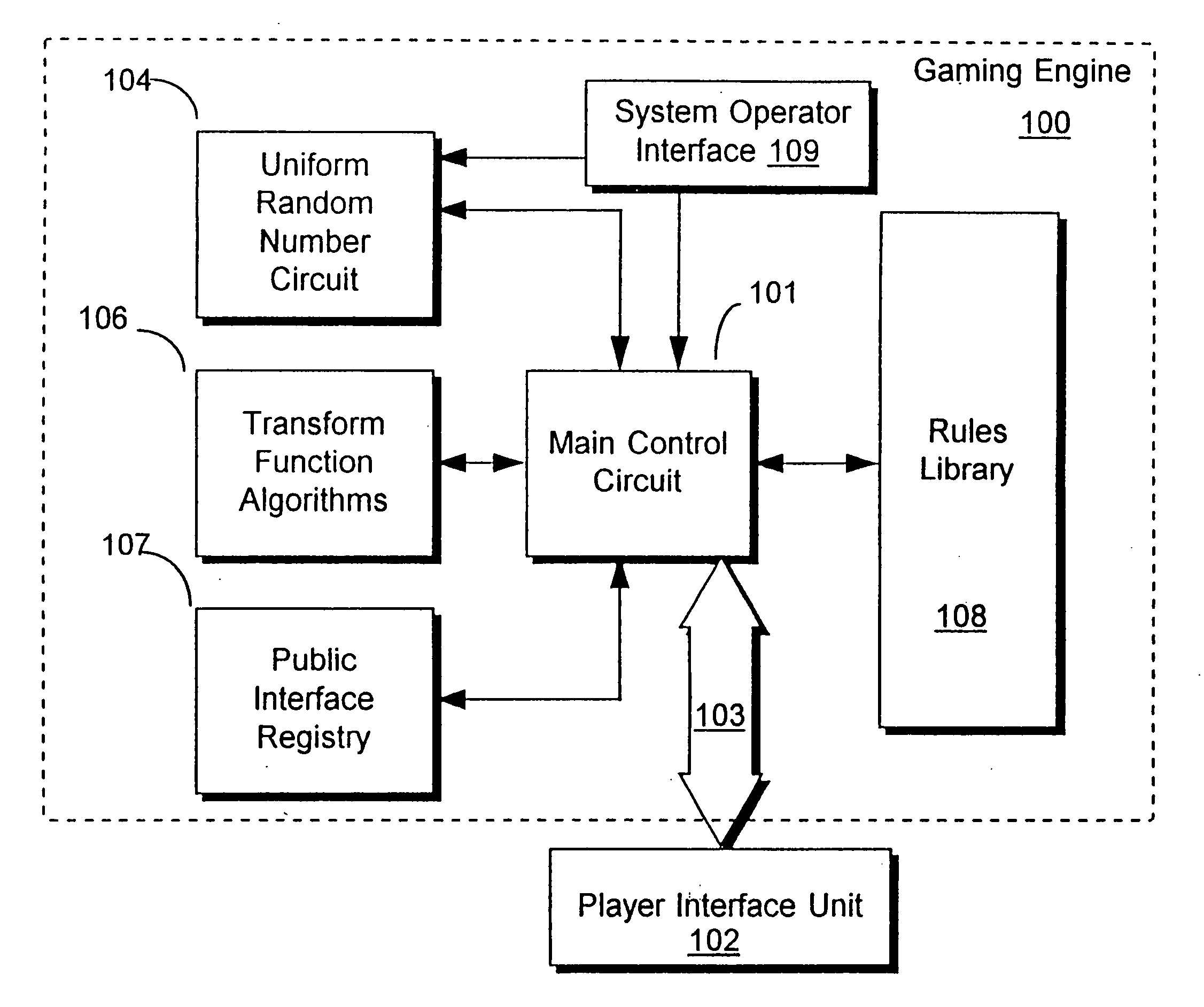Method for control of gaming systems and for generating random numbers
a technology of random numbers and gaming systems, applied in the field of electronic gaming engines, can solve the problems of generating deterministic algorithms that produce unpredictable, statistical random numbers, and easy to conceive of games that require replacement, and achieves the effect of high efficiency and not slowed down
- Summary
- Abstract
- Description
- Claims
- Application Information
AI Technical Summary
Benefits of technology
Problems solved by technology
Method used
Image
Examples
embodiment
Network Embodiment
[0076]FIG. 8 illustrates in block diagram for network embodiment in accordance with the present invention. Basic components of gaming engine 800 are similar to gaming engine 100 including random number circuit 804, transform algorithms 806, public interface registry 807, and rules library 808. Main control circuit 801 includes all of the functions described herein before in reference to main control circuit 101 but also includes function for supporting network interface circuit 812. Data bus 812 couples main control circuit 801 to network interface circuit 812.
[0077] The network embodiment shown in FIG. 8 serves a plurality of player interface units 802a-801e. This additional functionality is provided in part by network interface circuit 812 and network I / O circuits 812a-812e. Network interface circuit 812 and network I / O circuits 812a-812e can be conventional network circuits used for 10baseT, ethernet, Appletalk, or other known computer network systems. In selec...
PUM
 Login to View More
Login to View More Abstract
Description
Claims
Application Information
 Login to View More
Login to View More - R&D
- Intellectual Property
- Life Sciences
- Materials
- Tech Scout
- Unparalleled Data Quality
- Higher Quality Content
- 60% Fewer Hallucinations
Browse by: Latest US Patents, China's latest patents, Technical Efficacy Thesaurus, Application Domain, Technology Topic, Popular Technical Reports.
© 2025 PatSnap. All rights reserved.Legal|Privacy policy|Modern Slavery Act Transparency Statement|Sitemap|About US| Contact US: help@patsnap.com



